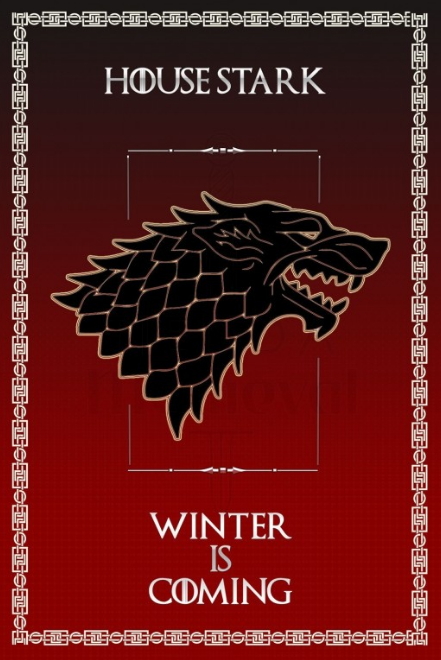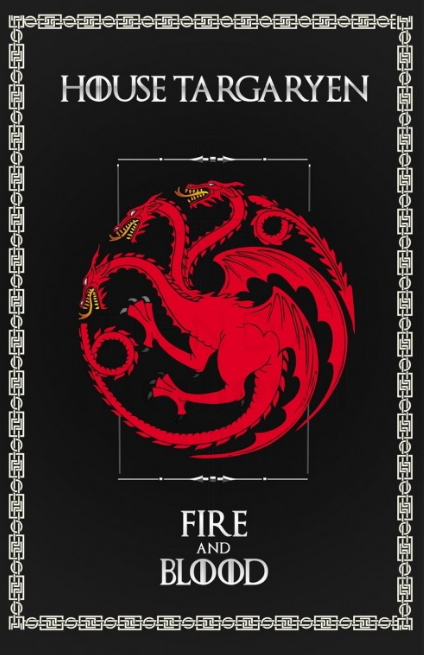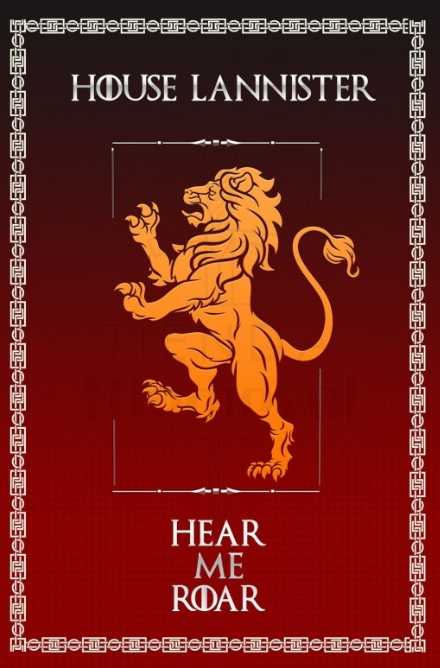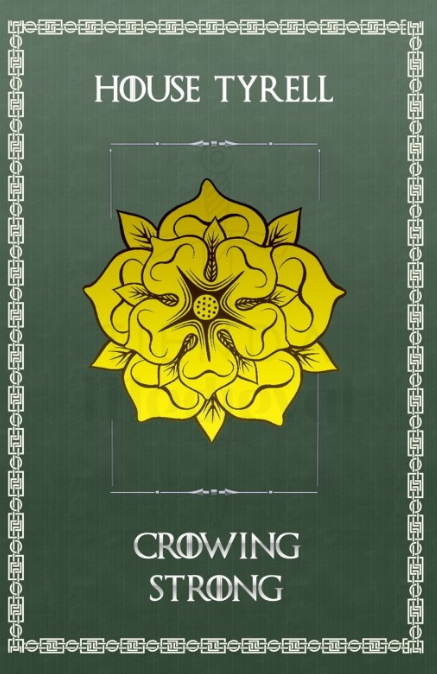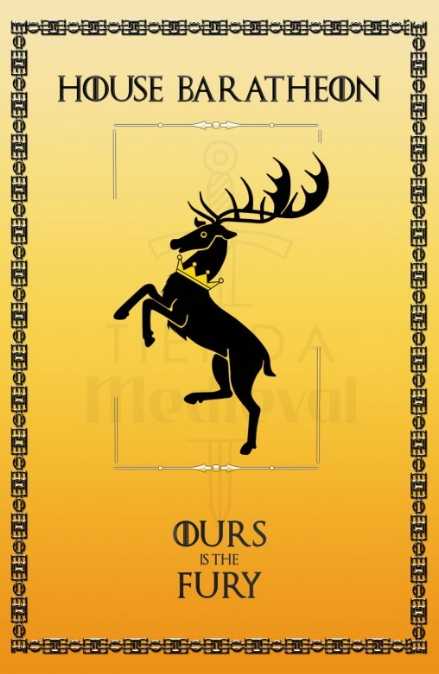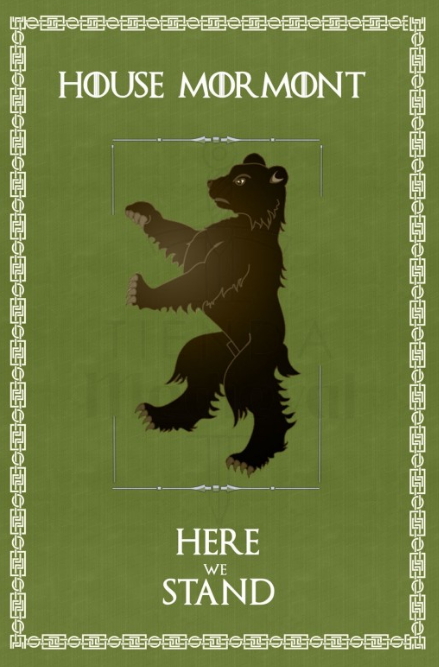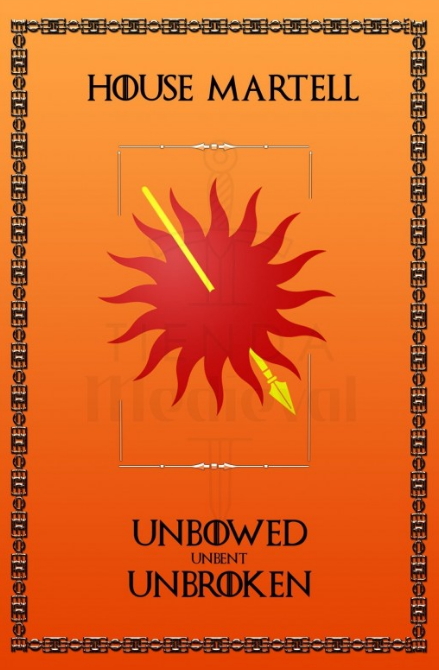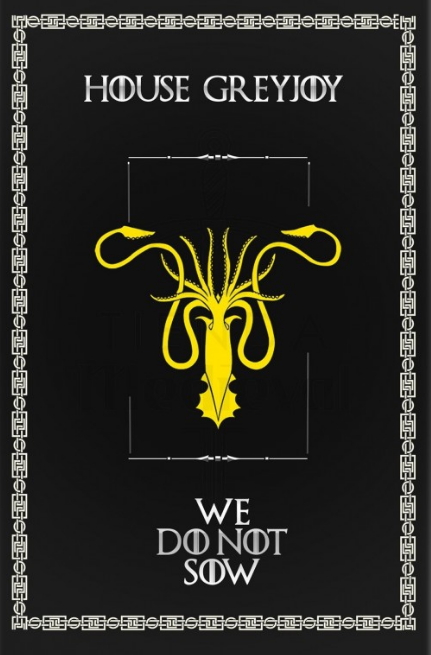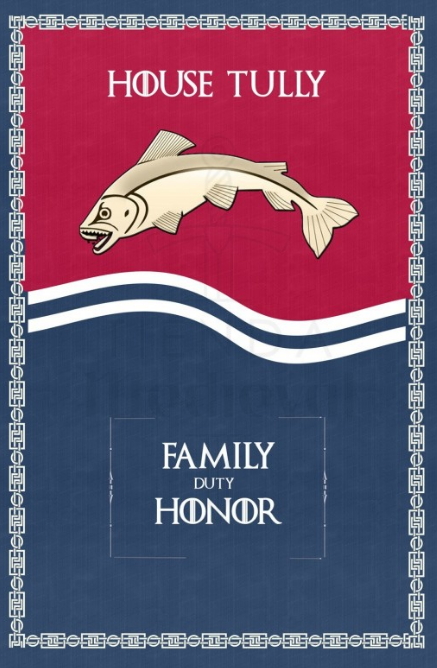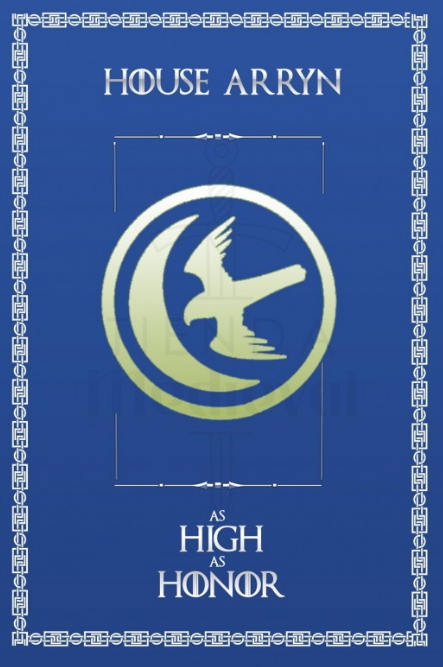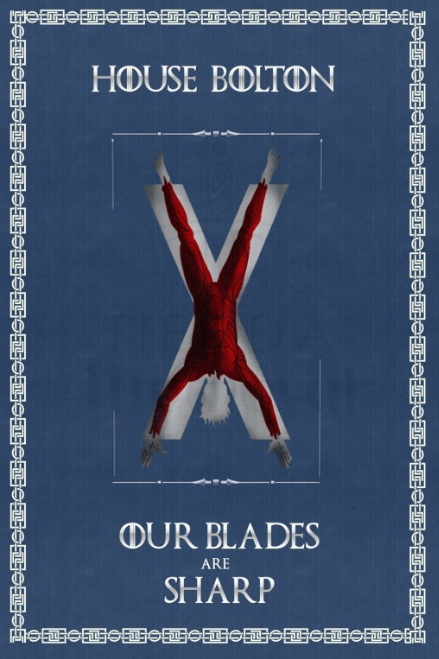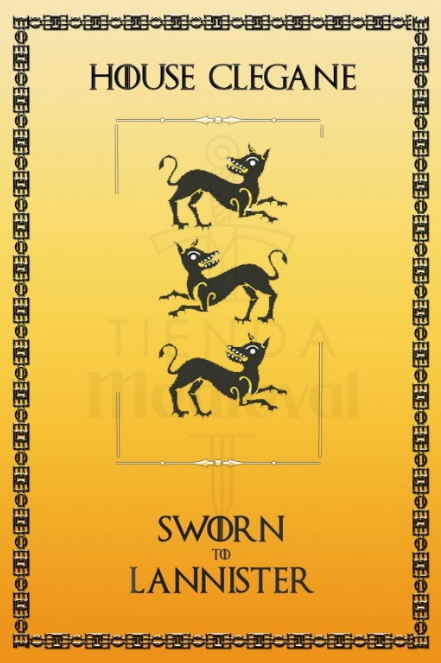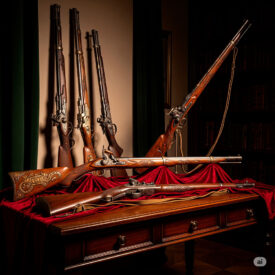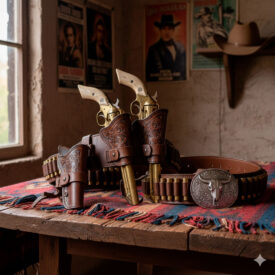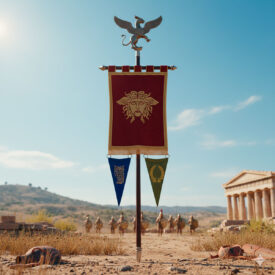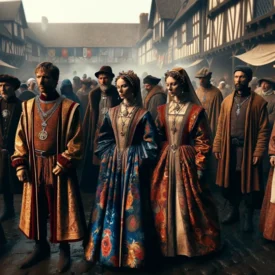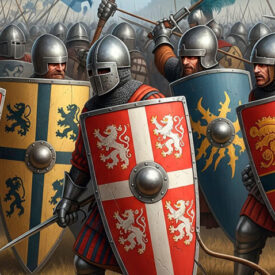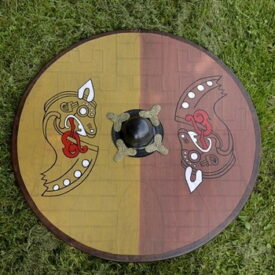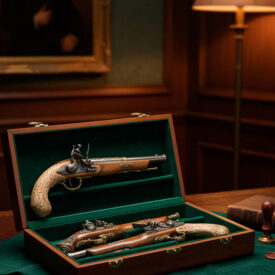What do the cloths tell when they wave over a wall? Imagine the wind blowing through the ancient stone of a castle and, among the flags, the history of a house unfolding in colors and shapes. The house banners of Game of Thrones are not mere ornaments: they are visual narratives, commitments of loyalty, and reminders of a lineage that defied centuries.
In this article, you will discover the origin and symbolic function of the banners, a chronology that places the milestones that defined them, a detailed analysis of the most iconic houses with their emblems and mottos, specifications of available replicas, and conservation tips so that a flag maintains its aura. We also include technical comparisons and a frequently asked questions section to clear up the most common queries.
Essential Chronology of Banners in Westeros
The role of the banner evolved alongside the history of Westeros. This chronology synthesizes the milestones that shaped the heraldic symbology of the houses:
- Age of Heroes and First Men: First tribal insignia and symbols linked to animals and spirits of the earth.
- Andal Invasion: Introduction of more systematic heraldic forms and mottos accompanying the blazon.
- Founding of the Great Houses: Emergence of family emblems that will endure generations, such as the Stark wolf or the Lannister lion.
- The Valyrian Conquest and the Targaryens: The three-headed dragon becomes an imperial symbol; the banners reflect the authority of King’s Landing.
- Wars and Rebellions (including Robert’s Rebellion and the War of the Five Kings): Banners serve to identify troops, rally points, and proclaim loyalties on the battlefield.
- Contemporary Era (series and books): Universalization of merchandising and reproduction of banners as collector’s items and ambiance setters.
Why a Banner Matters: Symbology and Function
A banner synthesizes identity and narrative. The emblem, color, and motto communicate geographical origin, political temperament, and expectations for history. In combat, they serve to rally troops; in times of peace, they announce presence and pride. Exploring these symbols is reading the psychogeography of Westeros.
Available Banners and Specifications
Modern replicas faithfully reproduce the emblems and proportions visible in the saga. Customary measurements and materials define their use: 75 cm x 115 cm is the standard dimension that balances presence and handling; the most common fabrics are polyester (resistant and suitable for outdoors) and satin (more luxurious finish for indoors).
How to Read a Banner: Colors, Animals, and Mottos
Colors (sable, gules, sinople, azure, or, argent) are not mere aesthetic preferences: they speak of earth, sea, fire, and clan. Animals evoke character: the Stark direwolf suggests resilience and pack; the Targaryen dragon, dominance by fire; the Lannister lion, prestige and ambition. A motto condenses the house philosophy into a few words.
House Stark
House Stark of Winterfell embodies the tenacity of the North. Its silver direwolf on a silver field is an austere image that speaks of survival. The motto Winter Is Coming is both a warning and a creed: prepare, resist, remember the cycle of seasons and greater threats. Stark banners often use light tones that contrast with snowy landscapes, recalling their ancestral origin among the First Men.
House Targaryen
House Targaryen, with its three-headed dragon gules on a sable field, represents fire, blood, and authority forged in the fire of dragons. Fire and Blood summarizes the will to dominate through the family’s creative force. On the banners, the contrast between red and black seeks to impose respect and fear, evoking the ancestral power of Dragonstone and the conquest of Aegon I.
House Lannister
The golden lion of the Lannisters on a gules field combines prestige and aggression. Their official motto Hear My Roar! —and the cultural pop “A Lannister always pays his debts”— convey economic power and political pressure. Lannister banners seek to shine in tone and message: they dominate attention in halls and on the battlefield.
House Tyrell
The golden rose on a sinople field of House Tyrell speaks of fertility, prosperity, and networks of influence. Growing Strong is a motto that evokes agriculture, soft power, and strategic patience. On fabrics, green and gold tones express abundance and can decorate both gardens and the halls of the Reach.
House Baratheon
The crowned stag of House Baratheon on a gold field symbolizes warrior nobility and dynastic legitimacy. Ours Is the Fury projects combative energy. Baratheon flags, with their golden background, seek to reign at the center of the political stage.
House Mormont
House Mormont, small but fierce, bears a sable bear in a sinople forest. Its motto Here We Stand —according to semi-canonical sources— synthesizes island resistance and communal strength. In banners, dark tones and the figure of the bear convey toughness and belonging to the North.
House Nymeros Martell
House Martell, of Sunspear, uses a red sun pierced by a golden spear on an orange background: images of the desert and passion. Unbowed, Unbent, Unbroken is a declaration of cultural independence and resistance against invaders. Martell banners tend to warm colors that stand out in the arid landscape of Dorne.
House Greyjoy of Pyke
The golden kraken on a sable field of the Greyjoys is unforgiving and maritime. With the motto We Do Not Sow, the iconography claims the economy of plunder and island independence. Their banners are recognizable from afar by their complex design and challenging message.
House Tully
The silver trout leaping over azure and gules waves is symbolic for a riverine house. Family, Duty, Honor summarizes the Tully ethic: family hierarchy and obligation. Tully banners convey movement and connection with the rivers they govern.
House Arryn
The Eyrie and its symbol—the crescent moon and silver falcon on a sky field—evoke heights and pride. As High as Honor articulates an aristocratic and isolated vision; their banners combine elegance and moral ascendancy.
House Bolton
House Bolton bears a blood-chilling emblem: a flayed man on a crimson field. Their motto—and aesthetic—are a warning of cruelty and terror as a political tool. Bolton banners are provocative and designed to intimidate.
House Clegane
Three sable dogs on a golden field summarize the chivalrous origin and warrior loyalty of the Cleganes. Their banners are simple, direct, and very recognizable in the ranks of the Westerlands.
Technical Specifications: Size, Materials, and Finish
Current replicas respect standard measurements and offer variants depending on use. This table compares the most common options:
| Material | Main Characteristics | Recommended Use |
|---|---|---|
| Polyester | High resistance to water and sun, lightweight, vivid colors | Exterior: balconies, outdoor events, tarpaulins |
| Satin | Glossy finish, soft touch, luxurious appearance | Interiors, halls, collecting, and display |
| Cotton/Blend | Natural look, good breathability, classic aesthetic | Interior decoration, moderate historical reconstruction |
- Polyester
-
- Characteristics: High resistance to water and sun, lightweight, vivid colors
- Recommended Use: Exterior: balconies, outdoor events, tarpaulins
- Satin
-
- Characteristics: Glossy and soft finish
- Recommended Use: Interiors and display
- Cotton/Blend
-
- Characteristics: Natural look and classic feel
- Recommended Use: Historical recreation and decoration
Ideas for Use and Ambiance
Banners are narrative tools at events. Use them to signal thematic areas, such as the Northern corridor or the square of Dorne; combine them with warm lighting for Tyrell or cool tones for Stark. At fairs, placed on poles or over skirts, they help with immediate recognition of each space.
Assembly and Anchoring
Replicas usually come with four ribbons at the ends that allow them to be tied to posts, railings, or crossbars. For outdoors, double-fasten and protect from intense gusts; for indoors, look for decorative rods so they hang with dignity.
Lighting and Display
Lighting alters color perception: cool light enhances blue and silver tones (Stark, Arryn), while warm light enhances reds and golds (Targaryen, Lannister, Tyrell).
Care and Conservation so the Banner Ages Gracefully
To keep a flag in good condition: clean with a soft cloth, avoid harsh machine washing, and store in a dry, dark place when not in use. Repair stitches and reinforce fastening ribbons if you detect wear. Synthetic fabrics resist harsh weather better, but satin requires more delicate treatment.
Quick Comparison Between Houses: Emblem, Motto, and Feeling
| House | Emblem | Motto | Symbolic Impression |
|---|---|---|---|
| Stark | Silver Direwolf | Winter Is Coming | Austere and Resilient |
| Targaryen | Three-Headed Dragon | Fire and Blood | Dominance and Fiery Legacy |
| Lannister | Golden Lion | Hear My Roar! | Economic Power and Pride |
Clearing Doubts About Banners, Shields, and Mottos of the Houses of Westeros
What is the historical origin of the Game of Thrones house banners?
The historical origin of the house banners in Game of Thrones is based on heraldic traditions similar to those of medieval Europe, where each noble house has an emblem and motto that represent its lineage, territory, and values. These insignia derive both from the internal legendary history of the world of Westeros, such as House Stark which descends from the First Men and uses a direwolf as a symbol, and from foundational events, for example, House Targaryen which bears a three-headed dragon in reference to Aegon I and his sisters, conquerors of Westeros with their dragons. The banners function as visual and propagandistic elements that identify each house in war and politics, reflecting their ancestry, power, and territory.
What materials are used to make Game of Thrones house banners?
Game of Thrones house banners are generally made from high-quality fabrics, commonly cotton or similar materials, which ensure durability and a good finish. These banners usually include fabric ribbons at the ends for easy attachment and have the characteristic emblems of each house printed. Sizes vary, with common dimensions such as 55×100 cm or 70×100 cm. In summary, the main material is a durable fabric, usually cotton or textile blends suitable for decoration and collecting.
How do the noble house banners differ in Game of Thrones?
The noble house banners in Game of Thrones differ primarily by their heraldic emblem, which represents an animal or characteristic symbol of the house, and by the background or field color that accompanies it. Additionally, each banner reflects the identity, values, history, and loyalties of the house to which it belongs. For example, the House Stark banner shows a gray direwolf on a silver field, while that of the Baratheons displays a crowned stag on a golden field. These emblems are used in battle to identify units and in formal settings as a symbol of pride and belonging.
What does the motto of each noble house symbolize in Game of Thrones?
The mottos of the noble houses in Game of Thrones symbolize central values, characteristics, or ideals of each family, reflecting their history, personality, and aspirations. For example:
- House Stark: “Winter is Coming” symbolizes preparation for difficult times and resistance to adversity.
- House Lannister: “Hear My Roar!” represents the family’s power and pride, showing strength and dominance.
- House Arryn: “As High as Honor” emphasizes pride and integrity, linked to nobility and justice.
- House Tully: “Family, Duty, Honor” highlights the values of family loyalty and responsibility.
- House Tyrell: “Growing Strong” points to growth, prosperity, and fertility.
- House Baratheon: “Ours is the Fury” symbolizes strength and intensity in action.
- House Martell: “Unbowed, Unbent, Unbroken” expresses resistance and pride of independence.
- House Greyjoy: “We Do Not Sow” reflects a warrior and plundering stance, without agricultural dependence.
- House Targaryen: “Fire and Blood” indicates strength, power, and the heritage linked to dragons and fire.
In short, each motto captures in a few words the essence and legacy that each noble house wants to transmit and defend within the universe of Westeros.
What characteristics do the shields of the noble houses in Game of Thrones have?
The shields of the noble houses in Game of Thrones have characteristics unique to each house that reflect their identity, history, and values through specific symbols and colors. Generally, shields include an emblematic animal or emblem and a background color that provides symbolic meaning.
Highlighted characteristics:
- Animal symbology or iconic elements: Each house uses a powerful symbol. For example, House Stark has a silver direwolf, House Baratheon a crowned black stag, House Martell a red sun pierced by a golden spear, and House Targaryen a red three-headed dragon.
- Colors with meaning: Backgrounds and colors are carefully chosen to convey characteristics and values. For example, the white background in the Starks represents winter and austerity, the gold of Baratheon signifies ambition and glory, the desert orange of Martell represents the desert and independence, and the red and black in Targaryen reflect fire and blood.
- Symbolically charged design: Beyond representing protection in battle, their shields reflect the history, lineage, and spirit of the house. Animals and figures often show dynamic poses (such as the rampant stag or the fierce wolf) to denote strength or nobility.
- Variable style and form: Some shields are sober and minimalist (like the Starks’), while others have more elaborate shapes and ornaments inspired by their culture and territory, such as the circular shield with desert details of the Martells.
In summary, the shields of the noble houses in Game of Thrones combine a highly representative animal or symbolic emblem, colors that express traits and legacy, and a design that summarizes the unique identity and origin of each house.
| Type of Oil | Main Characteristics | Recommended Use |
|---|---|---|
| Mineral Oil | High penetration, does not degrade or attract dirt | Regular protection and maintenance |
| Camellia Oil | Natural, acid-free, non-volatile | Antioxidant protection, lubrication |
| Lithium Grease | Dense, durable, does not evaporate | Prolonged storage, protection |
- Mineral Oil
-
- Characteristics: High penetration, does not degrade or attract dirt
- Recommended Use: Regular protection and maintenance
- Camellia Oil
-
- Characteristics: Natural, acid-free, non-volatile
- Recommended Use: Antioxidant protection, lubrication
- Lithium Grease
-
- Characteristics: Dense, durable, does not evaporate
- Recommended Use: Prolonged storage, protection
VIEW GAME OF THRONES BANNERS | VIEW OFFICIAL GAME OF THRONES SWORDS | VIEW OFFICIAL GAME OF THRONES PRODUCTS
A banner can transform a space: from an urban balcony to a grand hall, its presence tells a story. Maintaining iconographic fidelity and caring for the fabrics will ensure the flag ages like a relic worthy of its myth. Reflect on which house represents you and let its emblem wave as a living narrative.

